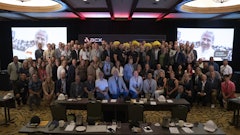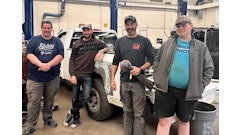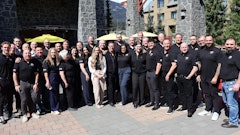
So…now what?
Column by STEFANO LIESSI
As with many of you, part of my day involves a generally quick perusal of some social media sites, mainly LinkedIn and Instagram. The rest I generally feel contribute less than nothing, and at times such is the case for the two I mentioned, but that is a story for another time to share over some libations.
You may or may not have recently noticed the uptick in “OE-certified facilities” in our industry. Finally—a recognized form of regulation and accountability placed on the industry, a way of getting repairs consistent and correct every time along with an actual document supporting means to obtain the proper compensation for efforts rendered. Eutopia has been achieved.
Or has it? For many years I have felt—and honestly, still do—that our industry is in dire need of some regulatory guidance, be it a third-party entity or even, dare I say, a government body to oversee the day-to-day workings within the collision repair world.
Welcome the OEM certification. Now, at first this seems like the answer, however, before we crack open that bottle of champagne, let us break it down a bit and see if the money is where the mouth is and if it is worth it.
I am not setting out to rain on anyone’s parade; I’m merely taking a closer look. I have seen many shops with multiple plaques on the walls representing many different OE manufactures. I
think it is great to see, but what makes the shop “certified?” After all, the OEs all have different ideas on how “things” should be.
With some investigating it seems there are a couple of variations on the idea of OE-certified. For many there is a third-party overseer that monitors or audits a facility to document the assets of the facility and to make sure they meet a certain criterion laid out in agreement. For example, regardless of what type of welder you have, if it meets the specified requirements, you are good to go. Does it meet the proper amperage capabilities, duty cycle, or squeeze pressure etc.
Then we have some OEs that say this is not good enough; you need the specific make model or brand we want you to have. Even though you already have a welder that meets the specifications, it’s not the one they want, ergo, you’re back out shopping.
Then there are some that want you to send your technicians to their OE facility to receive training from their OE instructor. Makes sense, I can see this being a requirement, however, it adds up fast and comes with some stringent stipulations and criteria for the tech to pass. This means a huge outlay of funds for a shop, especially if more than one is required to become certified, it could leave the shop under a bit of duress if the technician doesn’t pass or leaves altogether and opens a flower shop. I must admit, I still chuckle at the designation thrown in adds ‘Factory Trained’. Tongue in cheek perhaps.
Let’s say that you have a mix of OE trained techs for designated makes that potentially cost more than your first divorce to get certified, and you have bought the fancy unpronounceable named welder and you have met all the criteria laid out by a third-party audit group, you have committed to the investment. Every shop should be outfitted this way, we know that’s not reality, so points to you for doing so. This is a step in the right direction.
So, how do you get the ROI? Plaques on the wall mean work through the door, right? Not so fast, you will need to be diligent on meeting and keeping those set out standards. There is more to this than the certification. You will need to change some of the culture, some of the operating procedures and educate the partners on how you are required to complete the work in your facility to maintain this certification.
Now, in my thought process this should be easy, I am certified, and this is how I must complete my day-to-day repairs. Not all the partners buy into this thought process. This is where the ROI becomes challenging: do I maintain the status quo, or do I push to uphold my OEM certification agreements? Remember the statement about culture change, this is it. It is hard work. When certifications started getting popular, I must admit my naivety had me believing that since OE procedures are so incredibly important, the OEM certifications must include access to this information, giving some weight to being certified. Would make sense, wouldn’t it? Well, apparently only in my mind. The fact is you have the same access as anyone else, no privileges in this area.
To become OE-certified you pay a yearly fee to get audited and certified. The equipment list is, for the most part, standard, with the odd anomaly some may or may not have. The training of the technicians is generally available to anyone, insurance partner acceptance and recognition is viewed by some as negligible and the access to information is available to those that want it for a fee, certified or not. Overall, some may think the only difference is whether a shop pays a fee or not is the difference between certified and not. Many shops I spoke with say that overall, the increase in volume solely based on the OE certification is negligible, however one or two jobs generally cover the cost.
So, the magic question, is it worth it? In my opinion, and you are entitled to my opinion, it is worth it. If you are only following the motions expecting the plaque on the wall to do the work—it won’t. You should consider alternatives such as resto, or that flower shop. If you approach this with the heartfelt passion that you want to repair the vehicles properly, uphold the certification standards and maintain this higher level of quality and commitment, it is worth every penny.
With that attitude, meeting and maintaining these standards, you should display the certifications with pride and confidently express to your customers and partners your commitment to them, the repair process, your technicians, and taking your business to the next level. This is the first major step towards a better future for all the collision industry. Imagine how much better off all of us will be if OE Certifications can inspire us.



















